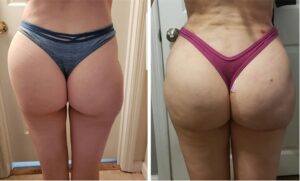Your body is an important part of your self-esteem. Suppose your body is getting in the way of your confidence or making it difficult to feel confident. In that case, you might consider a procedure to address these issues.
Hip augmentation, or hip dip fat transfer, is a procedure that contours your hips and thighs to give you a more defined silhouette. Many women are concerned about hip dips making their hips look flat and unattractive.
No diet or exercise will change the genetic tendency of your body to behave this way. Fat transfer to your hips is a safe and effective method to manage this condition and feel better about yourself. The procedure of hip augmentation can transform you from the inside and out, just like any other type of plastic surgery.
This procedure involves strategically injecting fat into the hips from one side of the body. The process of fat transfer isn’t as complicated as implant surgery.
What Is The Procedure In Fat Transfer To Hips?
Most likely, the procedure for hip augmentation begins with general anesthesia. The patient is then given liposuction. The stomach or inner thighs are the most likely areas to remove fat. After liposuction has been completed, the doctor will close and bandage any small incisions to remove the fat.
Next, the fat must be reinjected into the hips. The machine will remove all fluids and blood before the fat can be transferred to the hips.
The fat will then be placed into the patient’s hip area, with the ultimate goal to smoothen the curves in the hips. The injection is usually performed without the need for stitches.
Does Fat Transfer To Hips Last?
The main results of the fat transfer procedure to the hips may take up to six months. You should not expect results immediately after fat transfer.
Fat transfer may not last forever as our bodies absorb fat over time.
How Safe Is Hip Dip Fat Transfer?
Fat Transfer to Hips is relatively low-risk and safe. The risks involved with this procedure are
- Bruising at the incision site
- Injection site and injection pain
- Swelling or bleeding signs
- Incisions that cause scarring or infection
- Fat migration at the injection site
You will have a successful and safe hip augmentation procedure if you find an experienced and skilled plastic surgeon near you. They will provide the best results and look natural.
Fat Transfer To The Hips: The Benefits
You have many benefits to using your body fat to improve other areas of your body.
The following are some excellent benefits
- This procedure does not require you to use any animal fat.
- You can combine fat transfer with other cosmetic procedures such as breast augmentation or liposuction. The fat transfer can be combined with these procedures to contour the harvest area and provide enhancements.
- Fat transfer is a simple procedure that replaces lost volume with body fat.
- There is very little downtime. Suppose the fat transfer is done in conjunction with another cosmetic procedure. In that case, it may take longer, but for fat transfers alone, the healing time is only a few days.
- Fat transfer is a method of enhancing without the need for synthetic materials. Patients with multiple allergies can react to modern products for facial rejuvenation, such as those made from hyaluronic acids.
- General anesthesia is not used. The results are prompt and will improve over the following weeks.
- Fat transfers can have a lasting effect. Patients usually retain 50 to 80 percent of the fat transferred.
Am I An Ideal Candidate For Fat Transfer To Hips?
Every year, thousands of people have fat transfer procedures with amazing results. A fat transfer is a great option for anyone who wants to restore lost volume to the buttocks, face, backs, or hands, fill in hollow cheeks or sunken temples, scars, or skin depressions.
A healthy adult between the ages 30 and 65 with sufficient body fat to harvest is a good candidate for fat transfer. Good candidates will not smoke or have circulation problems.
How Much Does a Fat Transfer Cost To The Hips?
Prices range from $8,000 up to $11,000
Fat Transfer To Hips: Before and After
Final Words
Remember that results can take time. You may not see any noticeable changes for weeks or even months. Positive self-talk is a positive way to feel good about yourself.
You should stick to a routine and wellness program that makes you feel good. You should set short-term and longer-term goals. Your goals will make you feel and look better. Start now with the first steps.











